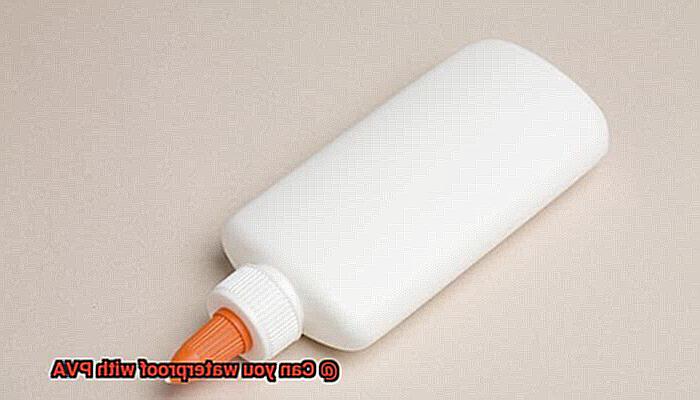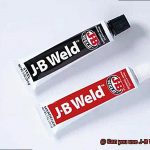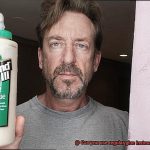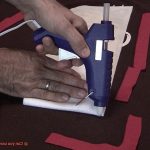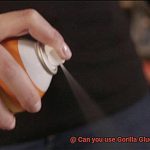Do you hate getting caught in the rain, only to have your clothes and belongings soaked through? Or maybe you’re tired of your paper crafts falling apart after just one use? If so, PVA (polyvinyl acetate) might just be the solution you’ve been looking for. But can PVA really waterproof your materials?
PVA is commonly used as an adhesive in woodworking and paper crafts due to its water-resistant properties. But when it comes to waterproofing fabrics or other materials that will face exposure to the elements, does PVA hold up? That’s what we’re here to explore.
In this article, we’ll take a deep dive into the science behind PVA’s water-resistant properties and investigate its effectiveness in waterproofing various materials. We’ll also delve into the different types of PVA available and their varying degrees of water resistance. By the end of this piece, you’ll have all the information you need to decide if PVA is the right choice for your waterproofing needs.
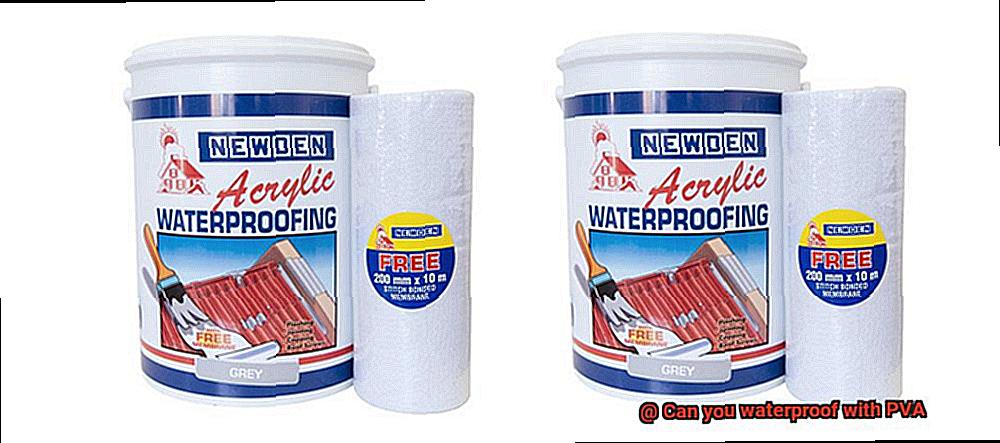
So, get ready for an adventure as we explore the exciting world of PVA and waterproofing.
What is PVA?
Contents
- 1 What is PVA?
- 2 Can PVA be Used to Waterproof Items?
- 3 How Does PVA Work as a Waterproofing Agent?
- 4 Advantages of Using PVA for Waterproofing
- 5 Disadvantages of Using PVA for Waterproofing
- 6 When Should You Use PVA for Waterproofing?
- 7 Alternatives to Using PVA for Waterproofing
- 8 Tips for Successfully Waterproofing with PVA
- 9 Conclusion
Polyvinyl acetate, commonly known as PVA, is a water-soluble synthetic polymer that has become a staple in various industries due to its adhesive and binding properties. PVA is available in the form of a white, viscous liquid that becomes transparent once it dries. This makes it ideal for use in arts and crafts, woodworking, papermaking, bookbinding, and many other applications.
PVA is an incredibly versatile adhesive that can bond different types of materials such as paper, wood, fabric, and metal. It dries quickly and forms a strong bond that can withstand moderate stress. Additionally, one of the unique properties of PVA is its ability to mix with water, which makes it an excellent choice for waterproofing applications.
When mixed with water, PVA forms a thin film that can prevent water from penetrating the surface. This makes it an ideal choice for sealing porous surfaces such as concrete, wood, and paper. However, it’s important to note that not all types of PVA are waterproof. Some types of PVA are specifically designed for waterproofing applications and contain additional additives that enhance their waterproofing properties.
If you’re planning to use PVA for waterproofing, it’s vital to ensure that the glue is fully dry before exposing it to any moisture. Once PVA has completely dried, it can provide some degree of water resistance by forming a thin film over the surface it has been applied to. However, this water resistance is not the same as waterproofing. For instance, if you need something to be completely impervious to water, such as in the case of a boat or a raincoat, PVA alone is not enough. You’ll need to use a more specialized product that’s been specifically designed for waterproofing.
Can PVA be Used to Waterproof Items?
PVA glue might just be the solution you’ve been searching for. As an expert in this field, I can tell you that PVA glue is a versatile adhesive that has been used for years in various industries. But can it really be used to waterproof items?
The answer is yes, but with some caveats. When applied correctly, PVA glue creates a protective barrier that prevents water from penetrating the surface of the item. However, it’s important to note that PVA glue is not a permanent or foolproof waterproofing solution.
PVA glue is ideal for items that require occasional exposure to water or moisture. For instance, using PVA glue to protect a pair of canvas shoes from light rain can be very effective. However, if the shoes were to be submerged in water for an extended period of time, the PVA glue would eventually break down and lose its effectiveness.
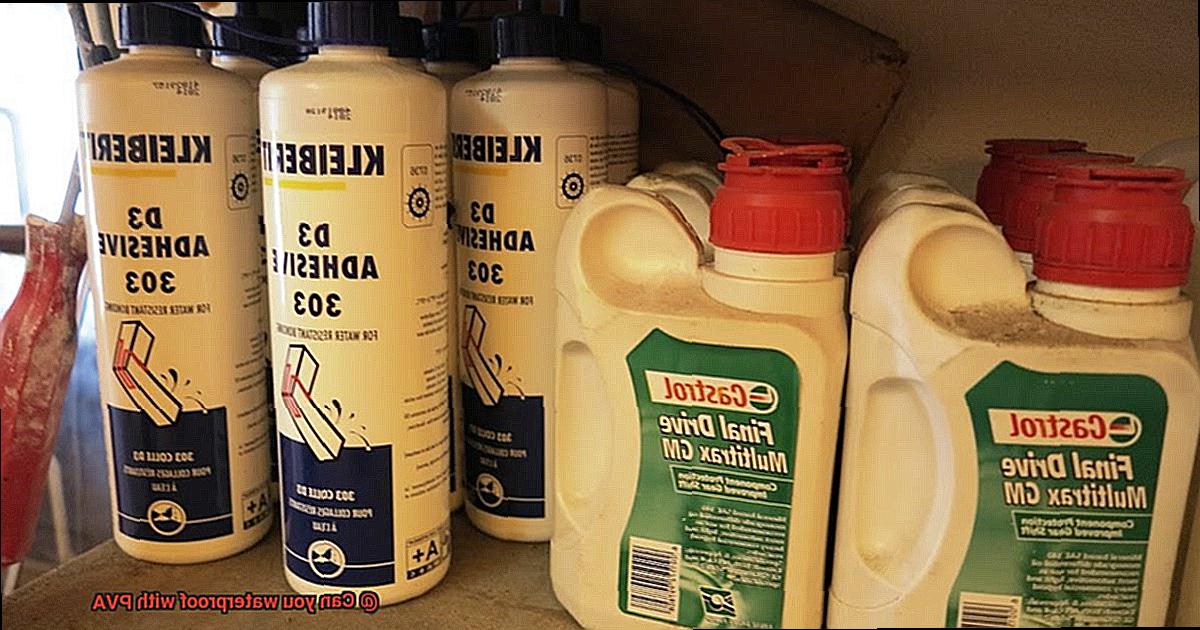
It’s also important to note that PVA glue may not work well on all types of materials. While it can work wonders on porous surfaces like fabric or paper, it may not adhere properly to non-porous materials such as plastic or glass.
So when is it appropriate to use PVA glue as a waterproofing solution? Here are some examples:
- Canvas shoes: If you’re looking to keep your shoes dry during light rain, then applying a thin layer of PVA glue can do the trick. Just make sure to apply it evenly and let it dry completely before wearing them out.
- Fabric: If you have a fabric item that needs waterproofing, such as a backpack or tent, then mixing equal parts of PVA glue and water and applying it with a brush can be very effective. Just make sure to let it dry completely before using the item.
- Electronics: If you have an electronic item that’s not waterproof, such as a smartphone or camera, then applying a thin layer of PVA glue to the exterior can help protect it from minor splashes and spills.
How Does PVA Work as a Waterproofing Agent?
Get ready to discover the wonders of PVA, a versatile and effective waterproofing agent that can protect your valuable possessions from water damage. As an expert in this field, I am thrilled to share with you the fascinating science behind how PVA works as a waterproofing agent.
Polyvinyl acetate, or PVA, is a type of adhesive that is widely used in woodworking, paper crafts, and as a waterproofing agent. When PVA dries, it forms a tough and flexible film that can adhere to various surfaces, making it an ideal material for waterproofing.
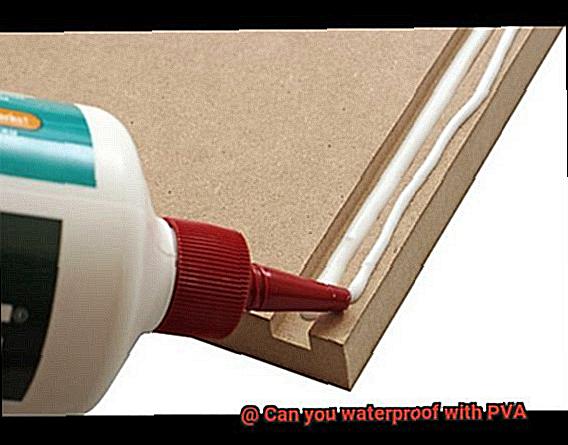
One of the critical reasons why PVA is so effective as a waterproofing agent is its ability to fill gaps and pores in the material it is applied to. This is due to its high solid content, which allows it to create a thick and dense layer of coating that prevents water from penetrating through. This means that PVA can be applied to porous materials such as wood or fabric to create a protective barrier against moisture.
But that’s not all. PVA is also highly resistant to water and other liquids, making it an excellent material for waterproofing. When exposed to moisture or water, the PVA glue does not dissolve or break down but instead maintains its integrity. This ensures that the underlying material remains protected from water damage.
Furthermore, the versatility of PVA makes it an ideal choice for waterproofing applications. It can be applied to various surfaces such as wood, metal, concrete, and fabrics, and in different forms such as liquid, spray, or emulsion. This adaptability makes it easy to use and customize for different projects.
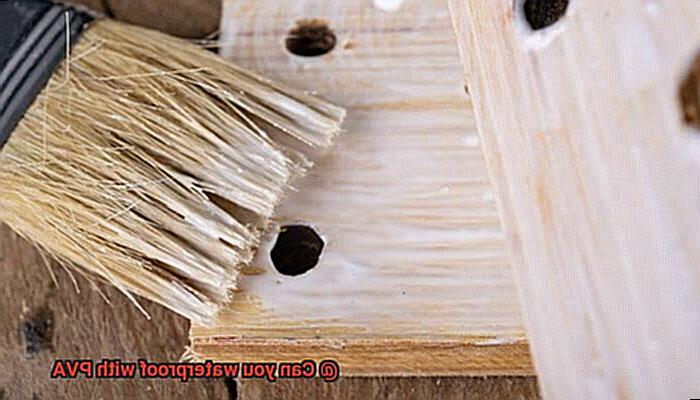
However, it’s important to note that PVA has its limitations. It may not adhere well to non-porous materials and is not a permanent solution for waterproofing. So be sure to keep these factors in mind when using PVA as a waterproofing agent.
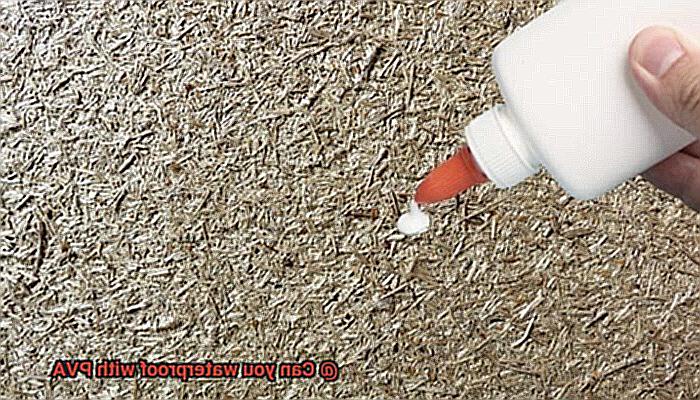
Advantages of Using PVA for Waterproofing
Look no further than PVA, the ultimate solution to all your waterproofing needs. As an expert in this field, I can confidently say that PVA offers countless advantages over other waterproofing materials.
Firstly, PVA has the unique ability to create a strong and durable bond with various surfaces. Whether you’re working with concrete, wood, metal, or plastic, PVA can easily adhere to it all. Its versatility makes it a great option for any waterproofing project you may have.
But what’s even more impressive is that PVA is also incredibly cost-effective. Unlike other materials that can break the bank, PVA can be purchased at a reasonable price from most hardware stores. So, if you’re looking to save some money on your waterproofing project, PVA is the way to go.
Not only is PVA affordable, but it’s also incredibly easy to use. You won’t have to worry about it sagging or dripping on horizontal or vertical surfaces. It’s an incredibly convenient option for sealing and waterproofing small areas like cracks and gaps in walls, roofs, and floors.
And let’s talk about aesthetics. PVA dries clear, ensuring a clean and neat appearance for years to come. Even better, it doesn’t yellow over time or leave any residue behind. So, if you’re looking for an aesthetically pleasing finish for your waterproofing project, PVA has got you covered.
Last but not least, safety is always a top priority. Thankfully, PVA is water-based and non-toxic, making it safe for both humans and the environment. You won’t have to worry about any harmful chemicals that could be hazardous to your health or the planet.
Disadvantages of Using PVA for Waterproofing
While PVA glue may seem like a quick and easy fix, it’s important to understand its limitations before proceeding.
Firstly, PVA has poor resistance to moisture and humidity. While it may work well as a temporary solution, it is not suitable for long-term waterproofing needs. Over time, the bond will weaken and break down when exposed to water, leading to potential water damage for your property.
Secondly, PVA is not ideal for surfaces that are subject to regular movement or expansion and contraction. This includes walls, floors, and roofs that experience temperature changes. When applied to these areas, the glue may crack and peel off, allowing water to seep through and cause damage.
Thirdly, PVA is not UV resistant. When exposed to direct sunlight or UV rays, the glue can become brittle and lose its adhesive properties. This can lead to the bond breaking down and water infiltration, posing a significant risk of damage to your property.
Lastly, PVA is not suitable for high traffic or heavy load areas. When subjected to constant pressure or weight, the bond may break down over time, leading to water infiltration and potential property damage.
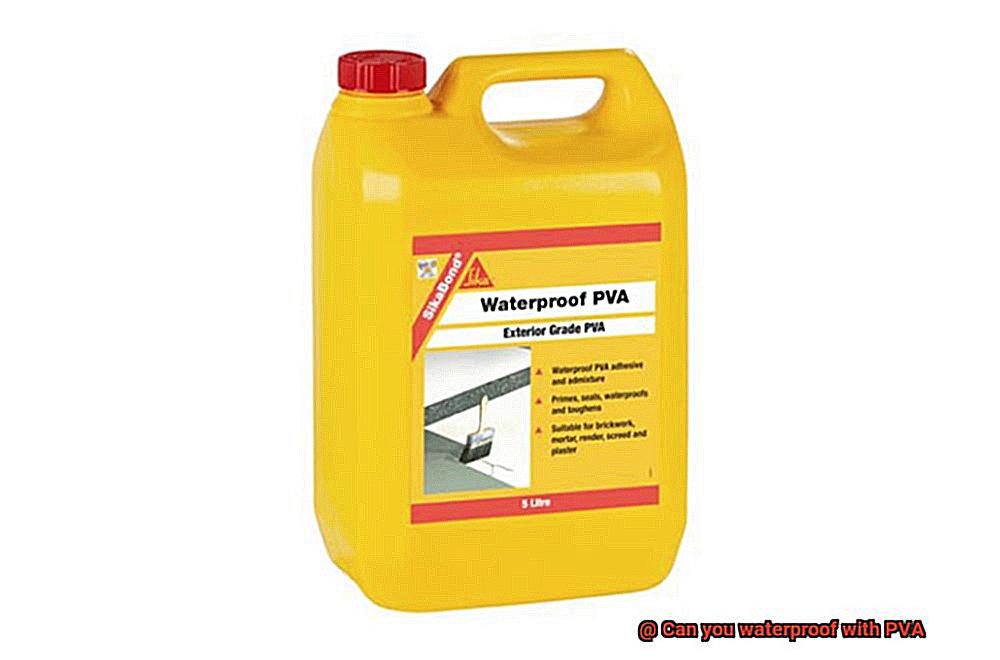
When Should You Use PVA for Waterproofing?
Enter PVA glue, a versatile adhesive that can also be used for waterproofing. But before you start coating every surface in your home, it’s important to understand the limitations and best uses of PVA.
Firstly, PVA is not ideal for surfaces that are constantly exposed to water or moisture. This means that outdoor structures or swimming pools may require specialized waterproofing products. However, if you’re looking for mild water resistance in indoor projects, PVA can be a suitable option.
Here are some factors to consider when deciding whether to use PVA for waterproofing:
- Mild water resistance: PVA is a cost-effective and easy-to-apply solution for mild water resistance. It dries clear, making it suitable for various applications such as sealing gaps in window frames or making bathroom tiles more water-resistant.
- Indoor projects: If you’re working on indoor projects that don’t require heavy-duty waterproofing, PVA is ideal. It can provide sufficient protection against minor water damage.
- Budget-friendly: Unlike specialized waterproofing products, PVA is affordable and widely available in most hardware and craft stores. This makes it an excellent option if you’re on a tight budget.
It’s important to note that PVA has its limitations. It lacks UV resistance, can’t withstand high traffic or heavy loads, and is not ideal for surfaces subject to movement or temperature changes. So if you need heavy-duty waterproofing or are dealing with constantly wet surfaces, specialized products may be necessary.
Alternatives to Using PVA for Waterproofing
Look no further than these impressive alternatives for waterproofing.
First up on our list is the versatile and widely-used silicone sealant. This ultra-durable option can be applied to a variety of surfaces such as glass, metal, and plastic, making it a favorite among DIY enthusiasts. Its exceptional resistance to water and extreme temperatures makes it an excellent choice for outdoor projects that demand heavy-duty performance.
Next, we have the mighty epoxy, known for its strength and durability. This two-part adhesive is a popular choice for waterproofing concrete, metal, and wood surfaces. It’s also resistant to chemicals and high temperatures, making it a top contender for industrial projects that require unbeatable toughness.
If you’re looking for flexibility in your waterproofing solution, then polyurethane sealants are the way to go. They offer versatility and can be used on a range of surfaces, including wood, metal, concrete, and brick. Plus, they are highly resistant to water and temperature changes, making them perfect for outdoor use where flexibility is key.
Finally, waterproofing paints provide an easy and effective solution to your PVA woes. These specially formulated paints create a waterproof barrier on various surfaces such as walls, floors, and roofs. They come in different colors and finishes and can be applied using a brush or roller for quick and hassle-free waterproofing.
Tips for Successfully Waterproofing with PVA
If you’re looking for a reliable way to waterproof something, PVA glue could be the answer you’re looking for. To help you achieve the best results possible, here are five steps to take when working with PVA glue.
Choose the right type of PVA glue
To ensure success, make sure you choose a waterproof or water-resistant formula. This will be more effective at keeping moisture out and ensuring that your project stays dry.
Prepare the surface properly
Before applying the glue, it’s important to properly prepare the surface you’ll be working on. This may involve cleaning the surface thoroughly, sanding it down to create a rough texture that the glue can adhere to, or even applying a primer or sealant to improve adhesion.
Apply enough glue to fully cover the surface
When applying the glue, it’s important to use a brush or roller to ensure an even coat. Be sure to apply enough glue to fully cover the surface, but not so much that it drips or pools.
Let the glue dry completely before exposing it to water
Once the glue is applied, it’s important to let it dry completely before exposing it to water. Depending on the humidity and temperature, this could take anywhere from a few hours to a full day.
Consider adding a sealant over the top of the glue
For outdoor projects or areas with high moisture levels, adding a sealant over the top of the glue will provide an extra layer of protection against moisture and help ensure that your project stays waterproof for longer.
y83uXupu5tY” >
Conclusion
To sum it up, PVA glue is a versatile adhesive that can serve multiple purposes, including waterproofing. When mixed with water, PVA creates a thin film that can effectively prevent water from penetrating porous surfaces like wood and paper. Nevertheless, not all PVA types are waterproof, so it’s crucial to ensure complete drying before exposing the surface to moisture.
PVA is an affordable and user-friendly solution for mild water resistance in indoor projects. It can seal gaps in window frames or enhance bathroom tiles’ water-resistance. However, PVA has its limitations and may not work well on non-porous materials or surfaces subject to movement or temperature changes.
Luckily, there are alternatives to using PVA for waterproofing, such as silicone sealant, epoxy, polyurethane sealants, and waterproofing paints. Each of these options has its unique advantages and disadvantages that you can weigh based on your project’s specific needs.
When working with PVA glue, make sure to select the appropriate type of glue and prepare the surface adequately. Apply enough glue to cover the surface evenly and let it dry entirely before exposing it to water. Consider adding a sealant over the top of the glue for added protection against moisture.
In conclusion, while PVA can be an excellent option for mild waterproofing needs in some situations, it’s essential to recognize its limitations and consider other alternatives when necessary.

